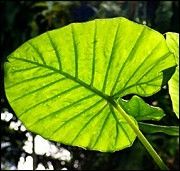Whether you accept it, avoid it or live somewhere in between, insurance coverage has become a defining issue for our profession. Patients increasingly expect to use their benefits, practitioners want to be compensated fairly for their time and expertise, and the system itself remains – at best – fragmented. The encouraging news is that coverage has expanded in meaningful ways. The challenging news is that reimbursement, across the board, remains inadequate.
Herbs & Botanicals
Lotus Leaf (he ye)
What is lotus leaf? What is it used for?
Lotus node comes from the lotus, a perennial aquatic plant related to the water lily. It grows throughout the tropical regions of Asia and the Middle East, with light green leaves and vibrant white flowers.
The leaves can grow extremely large at times, reaching more than 18 inches in diameter. They are typically collected in the summer and autumn, cleaned, then dried in the sun and cut into small pieces.
 Based on the concepts of traditional Chinese medicine, lotus leaf is slightly bitter, and mild, and is attributed to the Liver and Spleen meridians. The main functions of lotus leaf are to stop bleeding and invigorate the blood. As with most other parts of the lotus, lotus leaf is employed to treat a variety of conditions, ranging from hematemesis (vomiting with blood) and hematuria (blood in the urine) to metorrhagia and diarrhea. An active ingredient in lotus leaf, nuciferine, also helps to reduce muscle spasms. In addition, lotus leaf is sometimes used to treat dizziness and fevers.
Based on the concepts of traditional Chinese medicine, lotus leaf is slightly bitter, and mild, and is attributed to the Liver and Spleen meridians. The main functions of lotus leaf are to stop bleeding and invigorate the blood. As with most other parts of the lotus, lotus leaf is employed to treat a variety of conditions, ranging from hematemesis (vomiting with blood) and hematuria (blood in the urine) to metorrhagia and diarrhea. An active ingredient in lotus leaf, nuciferine, also helps to reduce muscle spasms. In addition, lotus leaf is sometimes used to treat dizziness and fevers.
How much lotus leaf should I take?
The typical dosage of lotus leaf is between 6 and 12 grams, boiled in water and drunk as a decoction. Large doses can be taken depending on the condition being treated.
What forms of lotus leaf are available?
Dried, sliced lotus leaf can be found at many herbal shops and Asian markets. Lotus leaf is also available in pill, powder and capsule form.
What can happen if I take too much lotus leaf? Are there any interactions I should be aware of? What precautions should I take?
Lotus leaf is considered extremely safe; the American Herbal Products Association has given it a class 1 rating, meaning that it can be safely consumed when used appropriately.
As of this writing, there are no known drug interactions associated with lotus leaf. As always, make sure to consult with a licensed health care provider before taking lotus leaf or any other herbal remedy or dietary supplement.
References
- Chen JK, Chen TT. Chinese Medical Herbology and Pharmacology. City of Industry, CA: Art of Medicine Press, 2004, p. 1016.
- Dharmananda S. Lotus seed: food and medicine. Published by the Institute for Traditional Medicine, March 2002. Available online.
- Gruenwald J, Brendler T, Jaenicke C (eds.) PDR for Herbal Medicines. Montvale, NJ: Medical Economics Company, 2000, pp. 480-481.
- McGuffin M, Hobbs C, Upton R, et al. (eds.) American Herbal Products Association's Botanical Safety Handbook. Boca Raton, FL: CRC Press, 1997, p. 78.
- Wu MJ, Wang L, Weng CY, et al. Antioxidant activity of methanol extract of the lotus leaf (nelumbo nucifera Gertn.). Am J Chin Med 2003;31(5):687-98.


